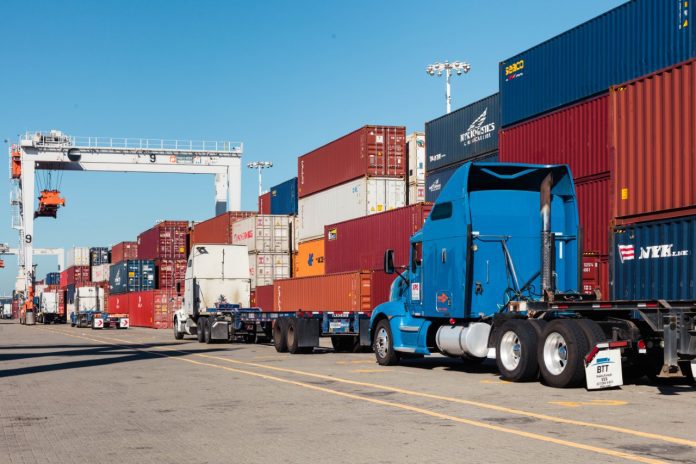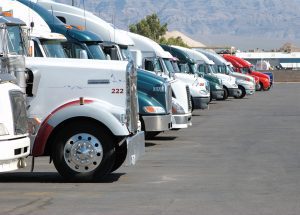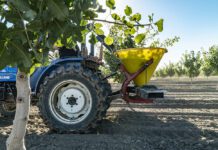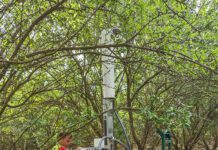
In the beginning of 2023, many had to make difficult decisions on what to do with existing heavy-duty diesel trucks. With the conclusion of the Truck and Bus rule, many older diesel trucks were junked, scrapped or sold out of state and upgrades were made to existing fleets by purchasing 2010 or newer equipment to meet the requirements set by the rule. I fielded plenty of calls asking if this would be the last time the State would require equipment to be replaced. Unfortunately, the new rule was just passed.
In April of this year, the California Air Resources Board (CARB) met to hear two significant proposals on the electrification of equipment throughout California. The rules proposed by staff have a direct impact across various state agencies, local governments, fuel producers and biofuel generators, equipment manufacturers and California businesses. Board Members heard a lengthy presentation from staff on the Advanced Clean Fleets Rule.
Dubbed the “Truck Rule 2.0” by staff early in the rulemaking process, the rule will require applicable fleets to upgrade specific equipment to comparable Zero Emission Vehicles (ZEV’s/electric) on an annual schedule. The rule specifically applies to fleet owners, operators and dispatchers of 50 or more Class 2b to Class 8 vehicles and applies to businesses with $50 million in receipts. Starting in 2024, applicable fleets would be required to begin converting predesignated internal combustion truck models with their electric counterparts once their useful life of 18 years has been reached or the equipment has reached a mileage threshold of 800,000 miles. Truck replacement and turnover is determined based on percentage amounts of fleets, with businesses having to replace existing trucks within the fleet with comparable ZEV models starting in 2025.

The first impacts of this rule will be felt by the drayage industry. Within the rule, CARB specifically highlighted the priority to convert drayage equipment over to electric beginning in 2024. Additionally, no internal-combustion drayage vehicle with over 800,000 miles will be allowed to enter a California port beginning in 2025. CARB has also set the standard that all drayage trucks will be electric by 2035. This has significant implications for the industry that hauls imports and exports from some of the countries’ busiest ports.
Prior to the hearing, CARB staff took several suggestions from industry and implemented them as part of the rule. Specifically, CARB staff included rule extensions to assist businesses most impacted by the requirement to electrify. Staff added a two-year extension in compliance if an equipment manufacturer is unable to fulfill an order by the required compliance date. Fleet owners must show a purchase order for the equipment prior to applying for the extension. A secondary exemption of up to five years is being provided for businesses experiencing interconnectivity delays. Businesses must show that a work order has been established by the utilities, and that the utilities have indicated the proposed project will be delayed for the foreseeable future. CARB is allowing for specialty vehicles with no comparable ZEV model or manufacturer to be exempted from the rule, until a company begins manufacturing a ZEV specific model.
During the Board Hearing, after staff presented the recent updates to the rule, the Board took public comment. The Board heard public testimony from over 120 commenters in the Byron Sher Auditorium in Sacramento. The unfortunate truth is that of those 120 comments, the Board only heard from three agricultural industry representatives on concerns about the implementation of this rule. Additional business representatives included drayage fleets, city representatives, two truck manufacturers as well as many in the biofuel industry. Industry representatives were outnumbered 5-to-1 by environmental activists pushing the Board to approve this rule and, in some cases, make it more stringent. In a move that probably helped more than it hurt, the Board had moved the Advanced Clean Fleets item to an up-or-down vote on the proposal, meaning the Board could only accept the proposed regulation as-is, and no additional changes could be made. Several Board Members expressed support to environmental groups’ proposals to decrease applicable fleet sizes as well as expedite compliance requirements, but the up-or-down proposal held them to either accept or deny the regulatory proposal.
As one of the agricultural representatives to comment on the proposed rule, we at Western Agricultural Processors Association (WAPA) chose to focus on the current struggles the agricultural industry experiences with the major utility providers. The agricultural industry has long been the sector to be put on the backburner by utility companies, with several of our members waiting years before even being given a date to interconnect new projects to the grid. This rule will manufacture electrical demand throughout the state, and WAPA is confident that the utility companies are not ready to meet the demand of our industry in the areas of the state that our businesses inhabit. Throughout the workshopping process, and through several updates to the Board, the California Public Utilities Commission and the major utility providers have had opportunities to present to the Board. Those groups have consistently stated they have no concern whatsoever with being able to connect industry, which we consider a blatant fallacy or outright lack of awareness of what is required with this proposal.
WAPA presented various examples of long delays for various agricultural businesses. Examples included a farm that has waited six years for the utility provider to electrify a shop, a nut processor that has to rely on two permitted natural gas engines to power their operation because of delays imposed by Pacific Gas & Electric, and lastly, another processor that is permitted as a “Major Source” who is unable to replace four internal combustion engines with comparable electric equipment because their service provider simply has too many other projects on the books. The last example drastically highlights how the pursuit of better air quality does not meet the priorities of the utility providers.
After public testimony ended, the Board reconvened the next day to make their formal vote. While several Board Members ignored concerns by industry, several other members of the Board echoed sentiments made by WAPA and incorporated a follow-up requirement by the utility companies to update the Board on the efforts to interconnect these businesses to help them comply with the rule. We do not expect the utility companies to be so open with these updates, so WAPA anticipates being as active as possible to shine a light on how bad it will continue to be for our industry.
Acting quickly on the heels of the Board Hearing, WAPA worked to bring together industry stakeholders, government agencies and utility companies as well as various other interested parties to demonstrate further how difficult the situation really is. In all, the meeting included state agency officials, industry representatives and the two major utility providers in the Valley. This gave industry the opportunity to explain to both CARB and the utility providers how bad the situation currently is, and how the new rule will further impact workload and equipment from the utility companies. The group concluded with a commitment to continue the dialogue in the coming months. We hope to have some impact in the future, but for now the clock has started.










